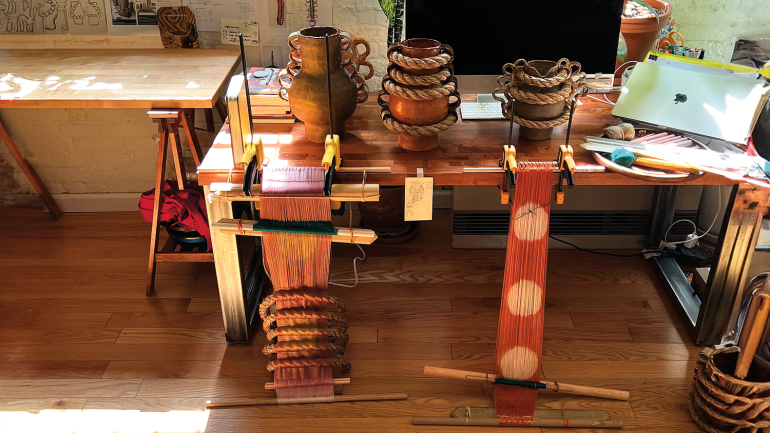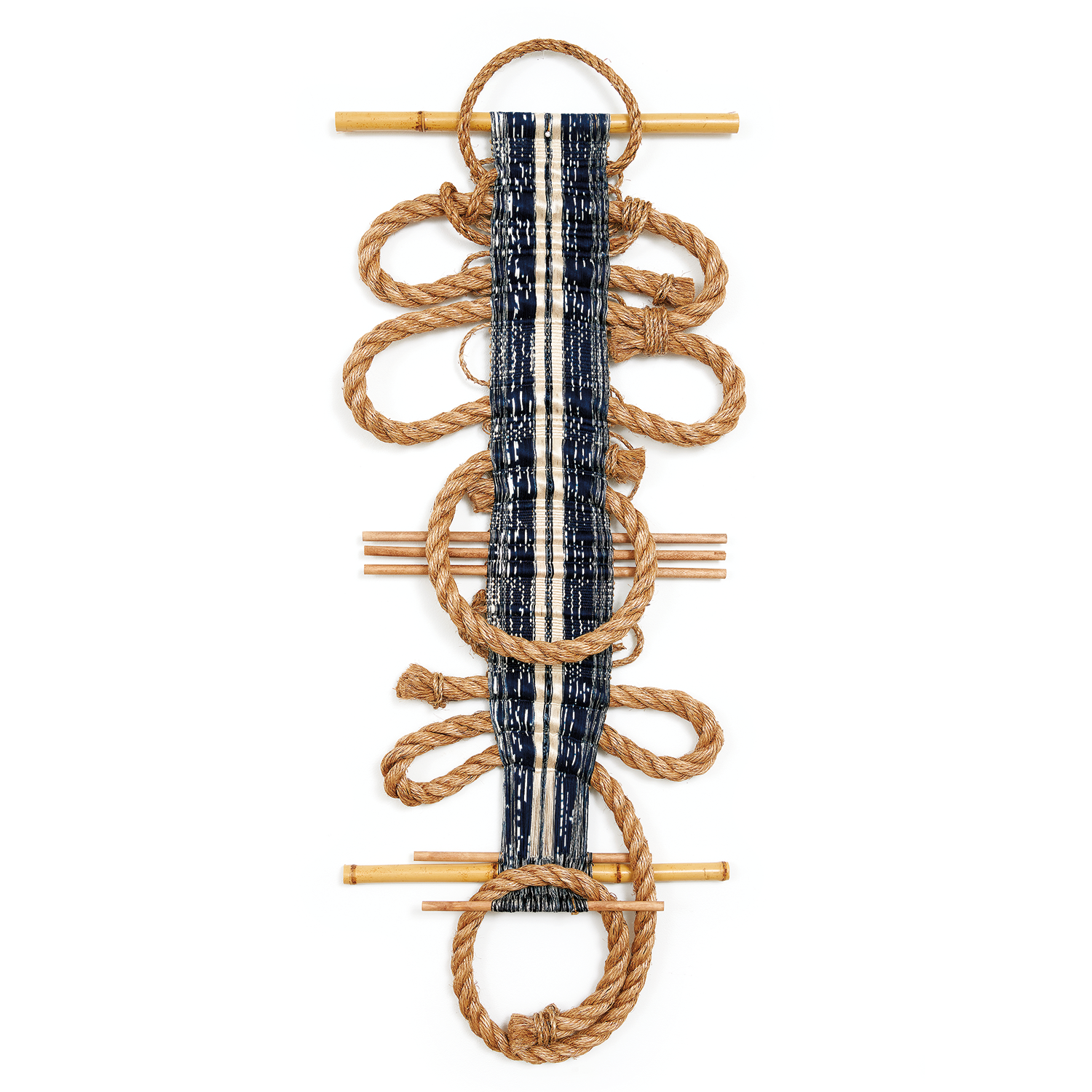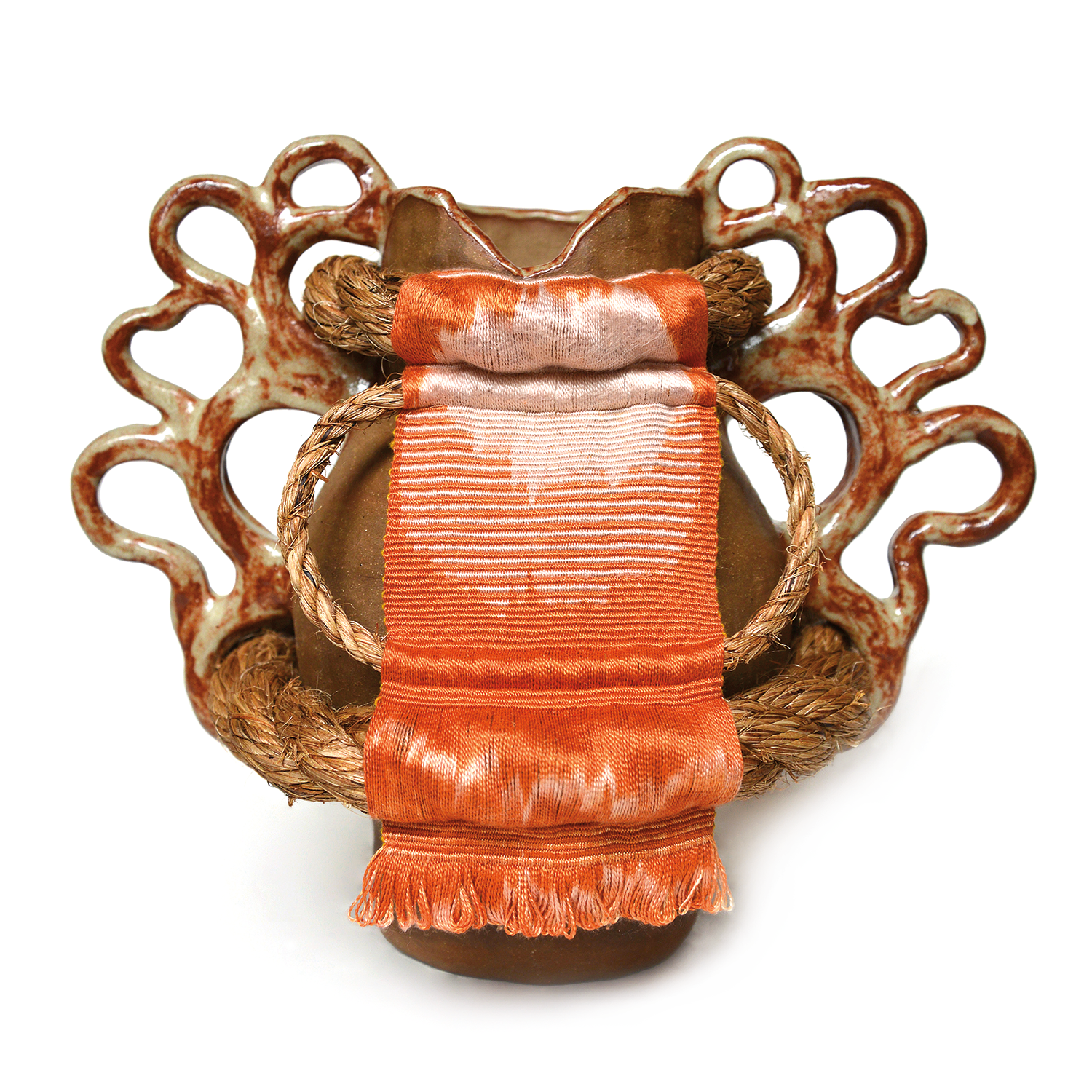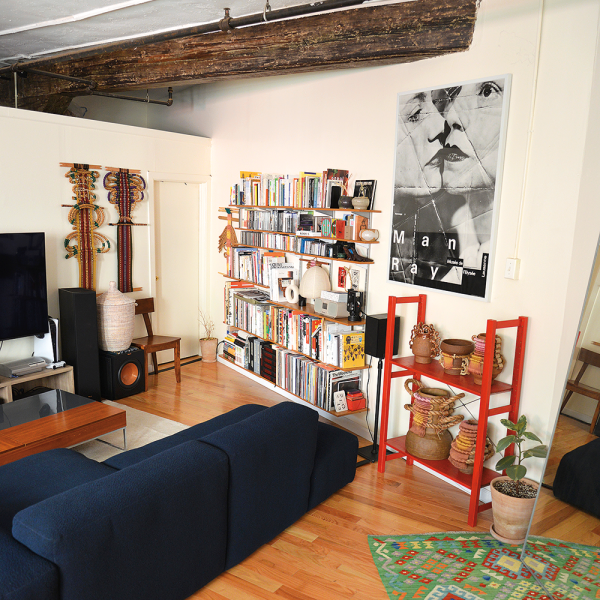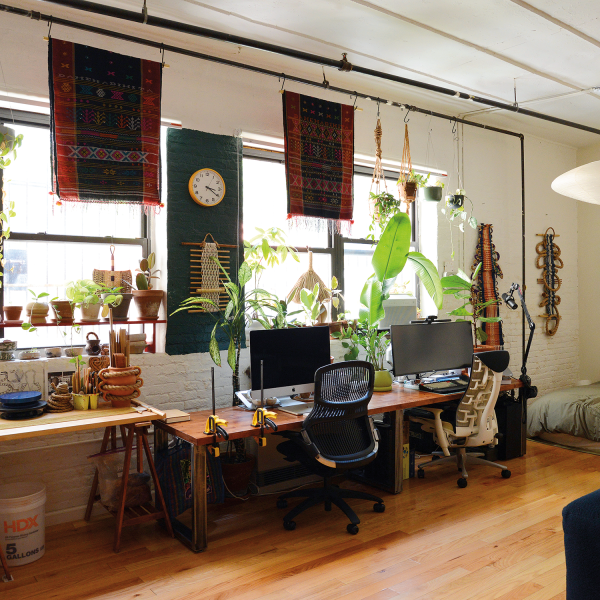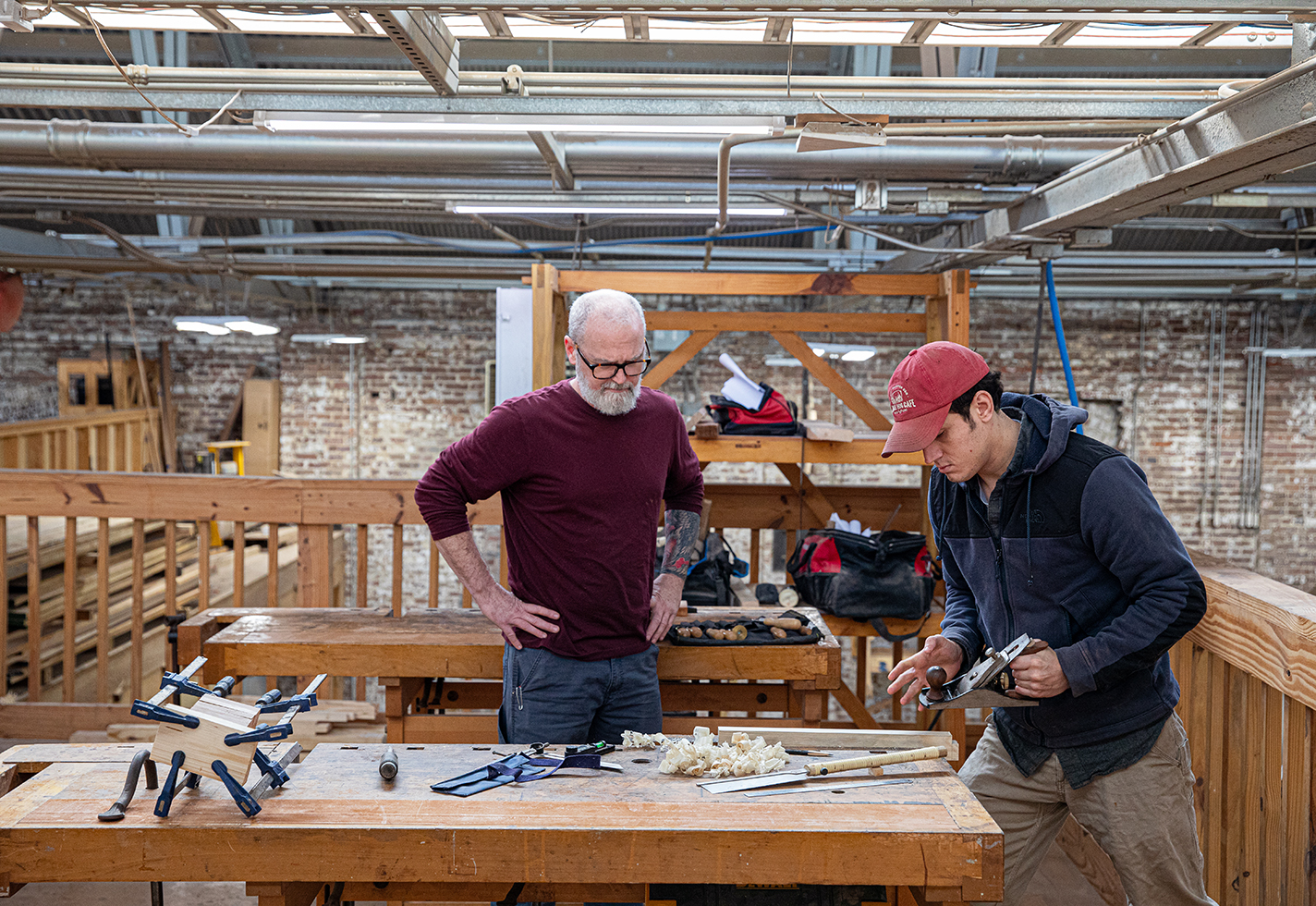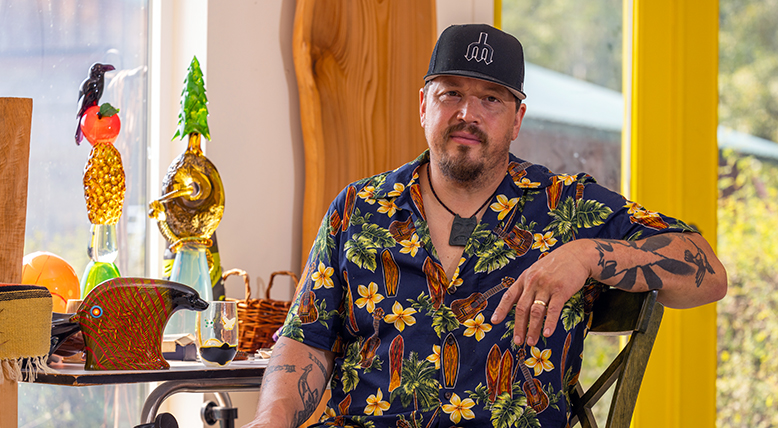To take a virtual tour of the author’s studio, check out this YouTube video.
I live with my partner in a studio apartment in Brooklyn, New York, nestled within a building that was constructed in 1930 as a toy factory. Our apartment is more than just a living space—it’s a sanctuary for creativity. The high ceilings and ample natural light provide the perfect backdrop for my textile art. The space seamlessly integrates living, working, and resting areas into a single cohesive environment. Over time, I have imbued it with my personal touches through a series of DIY projects, including painting walls and kitchen cabinets and refurbishing shelves to optimize functionality.
I have devised a routine to wake up early and weave before work and again after I come back from work until late at night, in addition to my other studio days. I especially like to weave with the natural light in the morning so that I can see the beautiful colors of naturally dyed yarns. I feel this is the unique and special part of having a home studio corner space—I can start working right after I wake up or I can work until very late, right before going to bed.
Navigating the balance of daily life between a full-time job and the pursuit of an artistic practice and maintaining momentum in my creative endeavors has been a journey with challenges, particularly after completing my master’s program without a dedicated studio space or a nurturing artistic community. In the face of adversity, I’ve found solace in the act of creation itself—a source of joy and rejuvenation that transcends the challenges of my circumstances. Whether weaving, experimenting with natural dyes, or molding clay into new forms, each creative endeavor has served as a lifeline, giving me a sense of purpose and vitality.
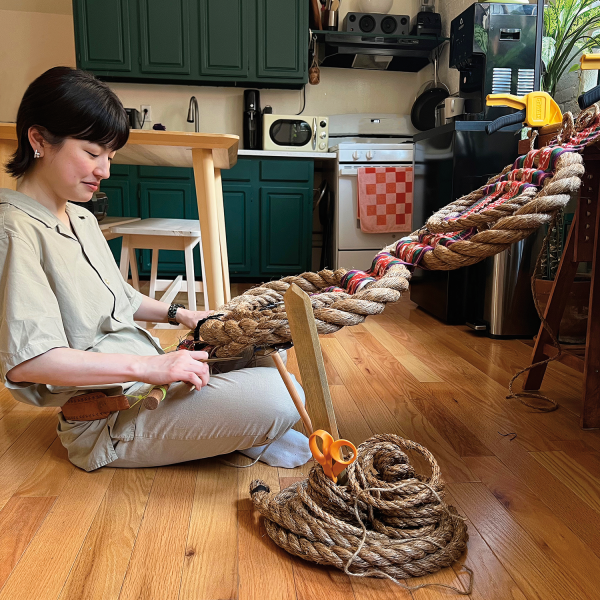
Saito relies on a DeWalt clamp to hold her loom in place.
